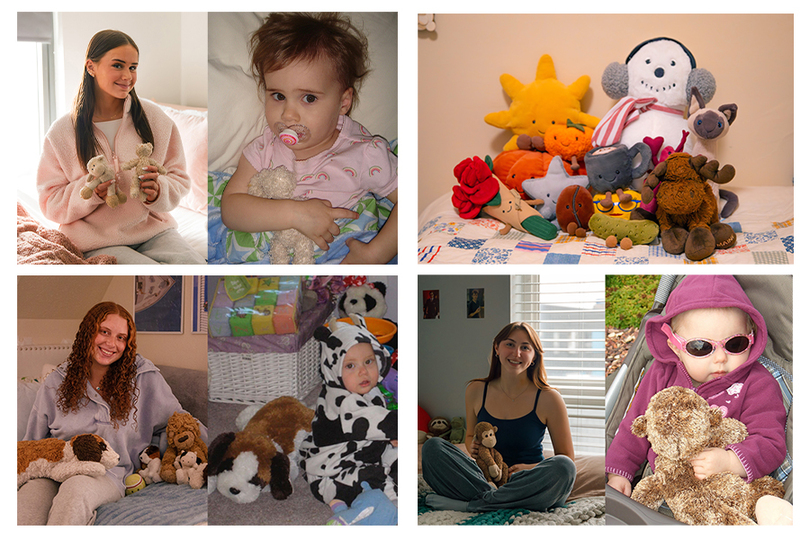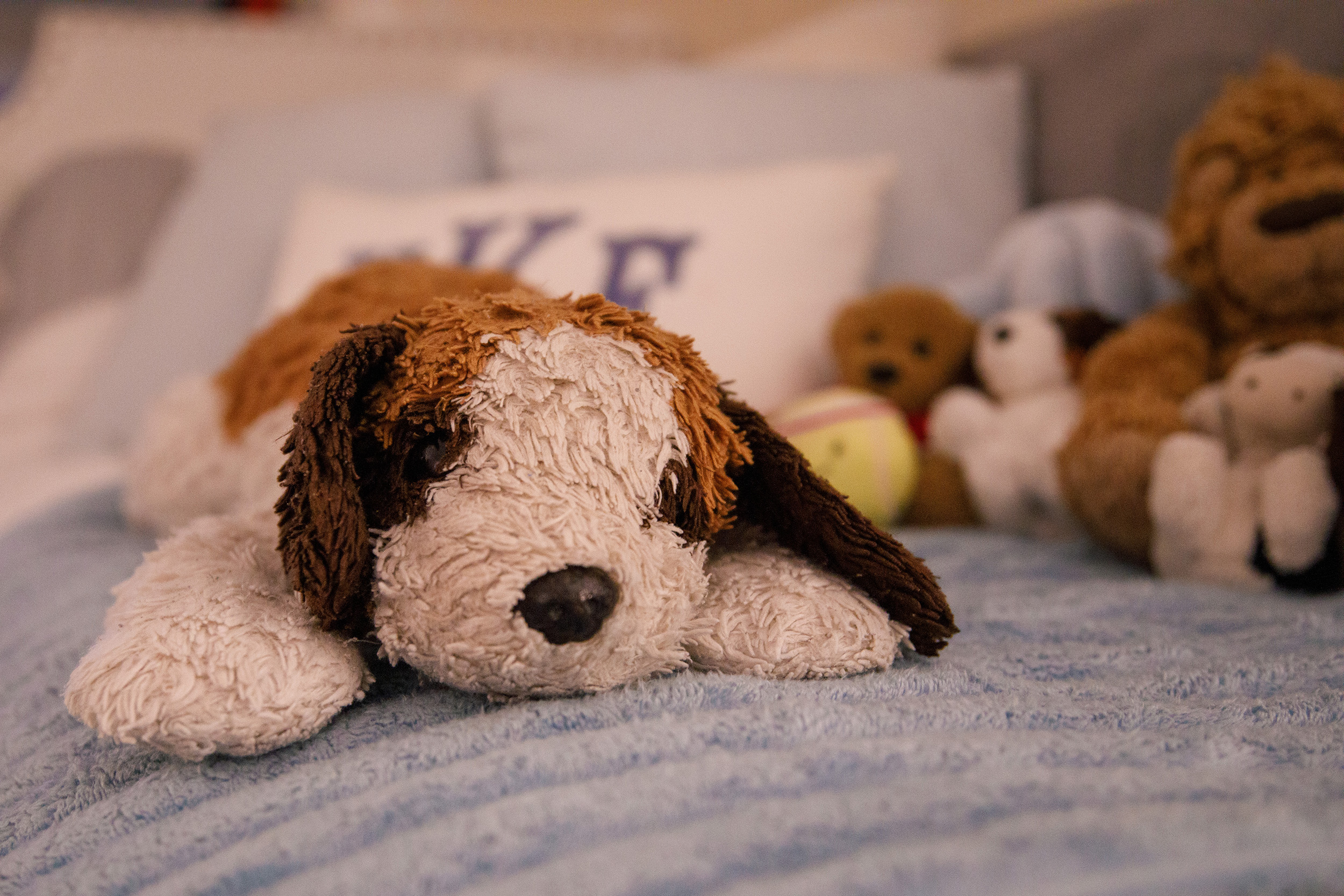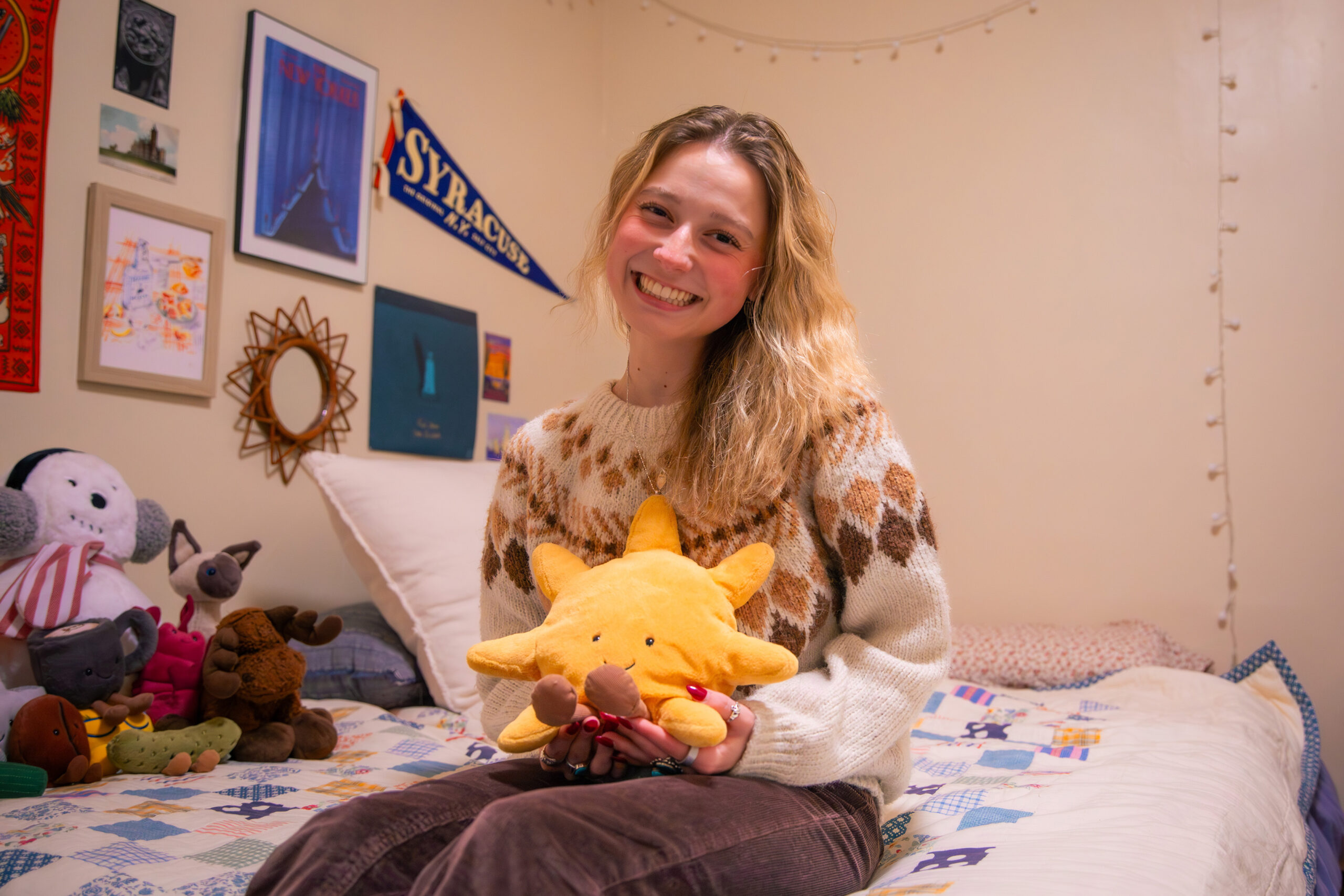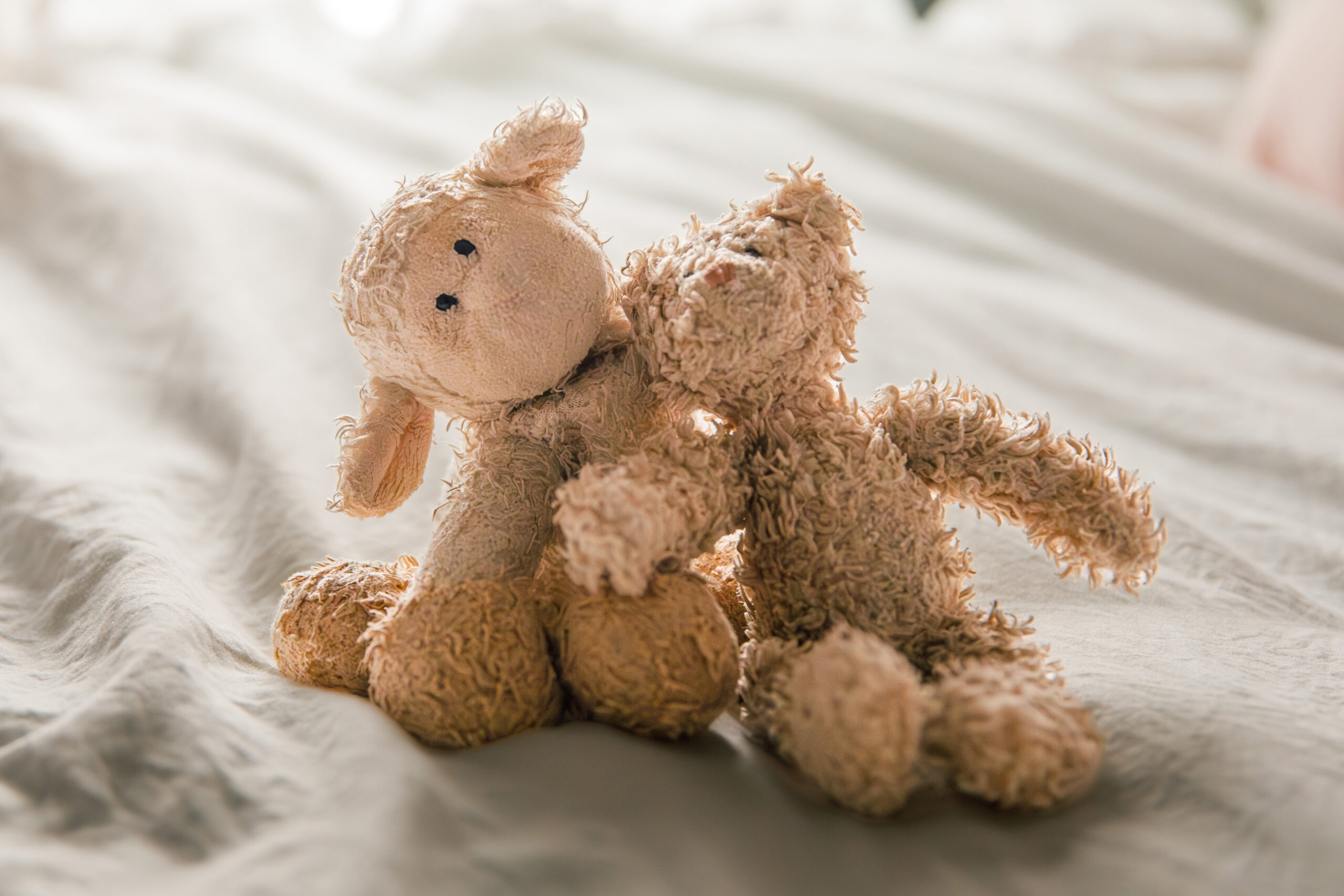As SU students grow up, stuffed animals remain mementos of childhood

Many favorite plushies have stayed with their owners since childhood. These longtime favorites were often gifts from close family members. Avery Magee | Asst. Photo Editor, Courtesy of Sofia Lentz, Vanessa Kramer, Lena Vaisey
Get the latest Syracuse news delivered right to your inbox.
Subscribe to our newsletter here.
Some students’ stuffed animals have seen it all: from hospitals to childhood bedrooms, hotel rooms to college dorms.
“I can’t really remember a time without my (stuffed cat) Kitty,” said Sadie Lehrfeld, a Syracuse University senior.
Whether it be a stuffed animal they’ve had since birth or a recent Jellycat purchase, many SU students still have a collection of plushies that lie in their college beds. Stuffed animals are nostalgic for students like Lehrfeld and sophomore Vanessa Kramer, who haven’t been without them since childhood.
“I literally don’t go anywhere without (my stuffed animal),” Kramer said. “A lot of times I refuse to put him in my suitcase, because I’m scared that my suitcase will get lost.”
Max, a stuffed dog, is Kramer’s “No. 1” stuffed animal. She’s had him since she was 6 months old; he was a gift from her grandma. Kramer said when she was a baby, he was the same size as, if not bigger than, her. Now she still uses him as a pillow and always sleeps next to him.

Sophomore Vanessa Kramer said she doesn’t go anywhere without her stuffed animal. Max the dog was a gift from her grandma.Avery Magee | Asst. Photo Editor
Junior Sofia Lentz has a stuffed monkey, also from her grandma, which she “creatively” named Monkey as a kid. Monkey came on all her adventures growing up, from sleepovers to Disney World, she said. Today, Monkey still accompanies Lentz, sitting in her apartment next to a frog Jellycat and a sloth that doubles as a heating pad.
“There was a time in high school where I put her off to the side and practiced sleeping without holding her, but that didn’t work,” Lentz said.
Childhood stuffed animals are comforting to keep, and they aren’t something Kramer thinks anyone needs to grow out of. As a kid, whenever she was sad, she’d talk to her stuffed animals, and Max’s ears were always there to wipe her tears, she said.
Today, he still provides the same solace. Anytime she’s upset, she lays in bed with Max — it’s comforting to know he’s been there for every part of her life, she said.
Meanwhile, junior Sophie Engels often found herself tending to her stuffed animals while growing up. She frequently played veterinarian, treating them like real animals. Stuffed animals were often the subjects of her imaginative childhood, she said.

Sophie Engels has accumulated a collection of Jellycats throughout college. She likes to use them as gifts for her loved ones.Avery Magee | Asst. Photo Editor
“I was elected for president many times in front of them,” Engels said.
For sophomore Lena Vaisey, stuffed animals are a tie to her family. She has a bear and a lamb in her college apartment, one is a childhood gift from her dad. Recently, she bought matching Jellycats with her 7-year-old sister; it’s a connection to her when she’s away from home.
Sophomore Sienna Gummel’s stuffed unicorn was a graduation gift from a friend, and it always reminds her of senior year. She’s also recently bought plushie collections at school.

Sophomore Sienna Gummel’s unicorn stuffed animal was a graduation gift from a friend. She brought it to college as a memento of her senior year in high school.Avery Magee | Asst. Photo Editor
Similarly, Engels has accumulated around 15 stuffed animals throughout college. But Sonny, her Jellycat shaped like the sun, always made her think of her mom when she first moved to school. Rather than a reminder of childhood, they represent the transition to college.
Jellycat, the trending company that makes plushies of anything from animals to kitchen appliances, has revived the sensation of collectibles for many, not just children, Engels said. After receiving Sonny, she became obsessed with Jellycats and likes to look for them to collect or gift to loved ones.

Engels’ favorite Jellycat is nicknamed Sonny. She said it reminds her of move-in day with her mom.Avery Magee | Asst. Photo Editor
“If I run into not even just a Jellycat, like any sort of little plushie thing that I think my friends would enjoy, it’s bought within the first five minutes,” Engels said. “It’s a fun way for me to show them that I’m thinking about them.”
Because of the variety of plushies that Jellycat makes, there’s a toy for every occasion, Vaisey said. All of hers are tied to a specific memory; she has a birthday cake from her 18th birthday, a heart from Valentine’s Day and an orange for Syracuse.
Even if there’s no specific sentimental value, stuffed animals can bring adults joy, and they’re a way to keep your inner child alive, Lehrfeld said. Beyond that, they’re just like collecting any other trinket or souvenir, Engels said.
“It’s like getting a fun poster or a cute picture,” Engels said. “It’s just something to look at and be like, ‘Oh yeah. Totally. I love that.’”

Sophomore Lena Vaisey’s stuffed animals tie her to her family. One of her plushies is a childhood gift from her dad.Avery Magee | Asst. Photo Editor
Stuffed animals like Max and Monkey have watched their owners grow from newborns to college students, and will likely see them into next life stages, Lentz said. Kramer remembers seeing her aunt’s bed filled with stuffed animals while growing up. She’s known since then that she’d never have to part ways with Max.
Many students like Vaisey and Engels can see themselves eventually passing their plushies down to their future children. It’s a way to let go of them, but keep them in the family, Kramer said. Lehrfeld said she may pass down her Jellycats, but never Kitty.
“I think I’ll be the type of person that has a husband and children and still loves her Kitty,” Lehrfeld said. “Kitty will always be mine.”
Whether it be an old, matted stuffed animal or a brand new gift, Engels said plushies can make anyone feel less lonely.
“Everyone wants something to have and to hold,” Engels said. “Memories are a good thing to physically hold in this way.”





